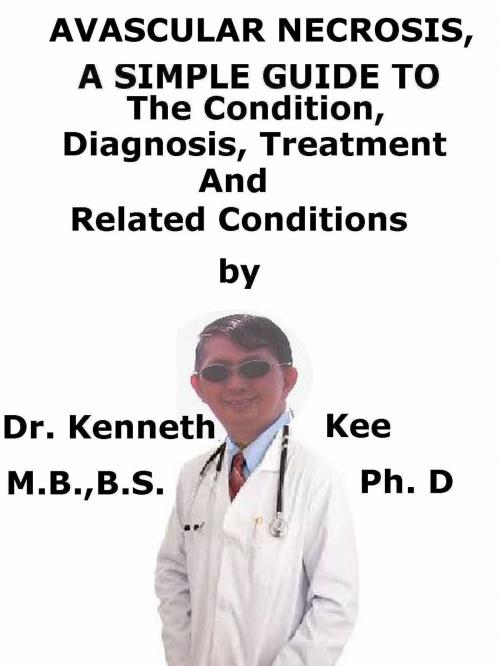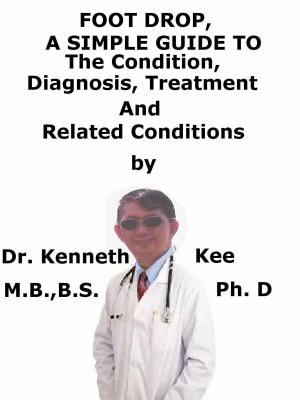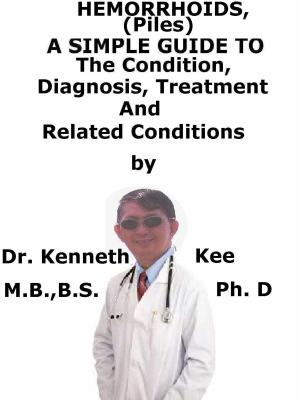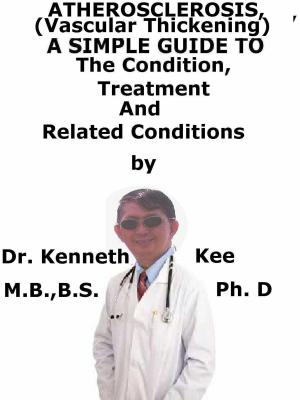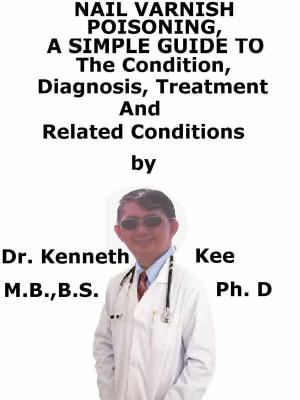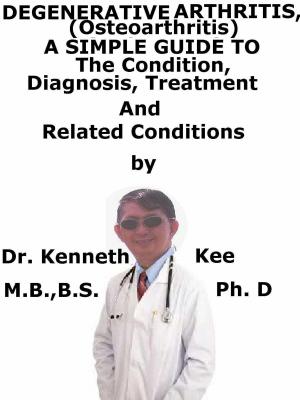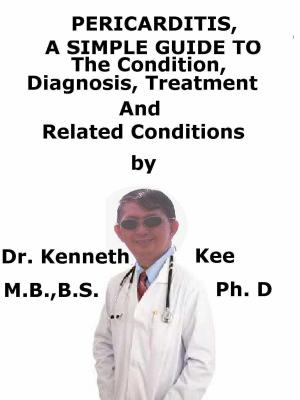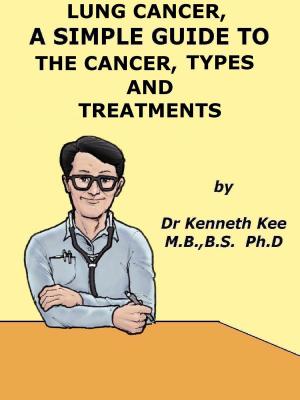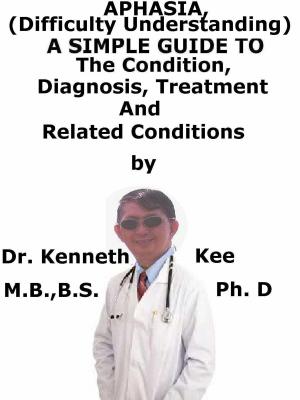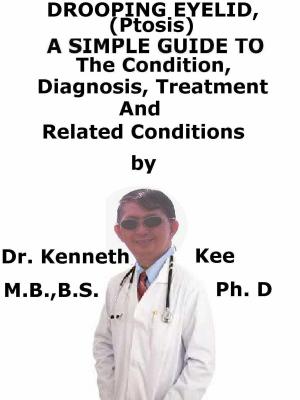Avascular Necrosis, A Simple Guide To The Condition, Diagnosis, Treatment And Related Conditions
Nonfiction, Health & Well Being, Medical, Specialties, Orthopedics| Author: | Kenneth Kee | ISBN: | 9781370583812 |
| Publisher: | Kenneth Kee | Publication: | March 26, 2018 |
| Imprint: | Smashwords Edition | Language: | English |
| Author: | Kenneth Kee |
| ISBN: | 9781370583812 |
| Publisher: | Kenneth Kee |
| Publication: | March 26, 2018 |
| Imprint: | Smashwords Edition |
| Language: | English |
This book describes Avascular Necrosis, Diagnosis and Treatment and Related Diseases
Avascular necrosis is the death of bone tissue because of a lack of blood supply.
Avascular necrosis can lead to tiny breaks in the bone and the bone's ultimate collapse.
The blood flow to a section of bone can be disrupted if the bone is fractured or the joint becomes dislocated.
It is most frequent in the hip and shoulder, but can involve other large joints such as the knee, elbow, wrist and ankle.
Avascular necrosis is also linked with long-term use of high-dose steroid medicines and excessive alcohol intake.
Causes
Avascular necrosis happens when part of the bone does not receive blood and dies.
After a while, the bone will just collapse.
If avascular necrosis is not treated, the joint worsens, resulting in severe arthritis.
Avascular necrosis can be produced by disease or by severe trauma, such as a fracture or dislocation that disrupts the blood supply to the bone.
Avascular necrosis can also happen without trauma or disease.
This is called idiopathic avascular necrosis indicating it happens without any known cause.
Other possible causes:
- Using oral or intravenous steroids
- Excessive alcohol use
- Sickle cell disease
- Dislocation or fractures around a joint
- Clotting disorders
- HIV or taking HIV drugs
- Radiation therapy
- Gaucher disease (disease in which harmful substance build up in the certain organs and the bone)
- Systemic lupus erythematosus (an autoimmune disease in which the body's immune system mistakenly attacks healthy tissue such as the bone)
- Legg-Calve-Perthes disease (childhood disease in which the thigh bone in the hip does not get enough blood, causing the bone to die)
- Decompression sickness from a lot of deep sea diving
Risk factors:
1.Trauma
2.Steroid use
High-dose use of corticosteroids, such as prednisone, is the most frequent cause of avascular necrosis that is not linked to trauma.
3.Excessive alcohol use
4.Bisphosphonate use
5.Radiation treatment for cancer can deteriorate bone.
6.Organ transplantation, particularly kidney transplant
Symptoms
Many patients have no symptoms in the early phases of avascular necrosis.
As the disorder becomes worse, the affected joint may hurt only once the patient put weight on it.
Ultimately, the joint may hurt even when the person is lying down.
The pain can be mild or severe and normally forms gradually.
Pain linked with avascular necrosis of the hip may be directed in the groin, thigh or buttock.
Besides the hip, the regions likely to be involved are the shoulder, knee, hand and foot.
Diagnosis:
The doctor will do a physical exam to determine if the patient has any diseases involving the bones.
Bone biopsy is the definitive standard for diagnosis of AVN.
MRI is the most sensitive and specific imaging diagnosis for AVN
Medical Care
Medical treatment of avascular necrosis (AVN) mainly is dependent on the site and severity of disease, and the patient's age and general health
No medical treatment has been shown effective in preventing or stopping the disease process.
Conservative treatments in early and smaller AVN are:
1.Limited weight bearing with crutches and
2.Pain medications.
3.Statin and bisphosphonates may be useful
4.Extracorporeal shockwave therapy (ESWT) relieves pain
Surgical Care
No surgical intervention is the agreed as best among surgeons in the treatment of AVN.
In early phases of AVN (pre-collapse), core decompression with or without bone graft is normally indicated the most suitable treatment.
In late stages, featured by collapse, femoral head deformity, and secondary osteoarthritis, total hip arthroplasty is the most suitable treatment.
TABLE OF CONTENT
Introduction
Chapter 1 Avascular Necrosis
Chapter 2 Causes
Chapter 3 Symptoms
Chapter 4 Diagnosis
Chapter 5 Treatment
Chapter 6 Prognosis
Chapter 7 OsteoArthritis
Chapter 8 Dislocation of Bone
Epilogue
This book describes Avascular Necrosis, Diagnosis and Treatment and Related Diseases
Avascular necrosis is the death of bone tissue because of a lack of blood supply.
Avascular necrosis can lead to tiny breaks in the bone and the bone's ultimate collapse.
The blood flow to a section of bone can be disrupted if the bone is fractured or the joint becomes dislocated.
It is most frequent in the hip and shoulder, but can involve other large joints such as the knee, elbow, wrist and ankle.
Avascular necrosis is also linked with long-term use of high-dose steroid medicines and excessive alcohol intake.
Causes
Avascular necrosis happens when part of the bone does not receive blood and dies.
After a while, the bone will just collapse.
If avascular necrosis is not treated, the joint worsens, resulting in severe arthritis.
Avascular necrosis can be produced by disease or by severe trauma, such as a fracture or dislocation that disrupts the blood supply to the bone.
Avascular necrosis can also happen without trauma or disease.
This is called idiopathic avascular necrosis indicating it happens without any known cause.
Other possible causes:
- Using oral or intravenous steroids
- Excessive alcohol use
- Sickle cell disease
- Dislocation or fractures around a joint
- Clotting disorders
- HIV or taking HIV drugs
- Radiation therapy
- Gaucher disease (disease in which harmful substance build up in the certain organs and the bone)
- Systemic lupus erythematosus (an autoimmune disease in which the body's immune system mistakenly attacks healthy tissue such as the bone)
- Legg-Calve-Perthes disease (childhood disease in which the thigh bone in the hip does not get enough blood, causing the bone to die)
- Decompression sickness from a lot of deep sea diving
Risk factors:
1.Trauma
2.Steroid use
High-dose use of corticosteroids, such as prednisone, is the most frequent cause of avascular necrosis that is not linked to trauma.
3.Excessive alcohol use
4.Bisphosphonate use
5.Radiation treatment for cancer can deteriorate bone.
6.Organ transplantation, particularly kidney transplant
Symptoms
Many patients have no symptoms in the early phases of avascular necrosis.
As the disorder becomes worse, the affected joint may hurt only once the patient put weight on it.
Ultimately, the joint may hurt even when the person is lying down.
The pain can be mild or severe and normally forms gradually.
Pain linked with avascular necrosis of the hip may be directed in the groin, thigh or buttock.
Besides the hip, the regions likely to be involved are the shoulder, knee, hand and foot.
Diagnosis:
The doctor will do a physical exam to determine if the patient has any diseases involving the bones.
Bone biopsy is the definitive standard for diagnosis of AVN.
MRI is the most sensitive and specific imaging diagnosis for AVN
Medical Care
Medical treatment of avascular necrosis (AVN) mainly is dependent on the site and severity of disease, and the patient's age and general health
No medical treatment has been shown effective in preventing or stopping the disease process.
Conservative treatments in early and smaller AVN are:
1.Limited weight bearing with crutches and
2.Pain medications.
3.Statin and bisphosphonates may be useful
4.Extracorporeal shockwave therapy (ESWT) relieves pain
Surgical Care
No surgical intervention is the agreed as best among surgeons in the treatment of AVN.
In early phases of AVN (pre-collapse), core decompression with or without bone graft is normally indicated the most suitable treatment.
In late stages, featured by collapse, femoral head deformity, and secondary osteoarthritis, total hip arthroplasty is the most suitable treatment.
TABLE OF CONTENT
Introduction
Chapter 1 Avascular Necrosis
Chapter 2 Causes
Chapter 3 Symptoms
Chapter 4 Diagnosis
Chapter 5 Treatment
Chapter 6 Prognosis
Chapter 7 OsteoArthritis
Chapter 8 Dislocation of Bone
Epilogue
